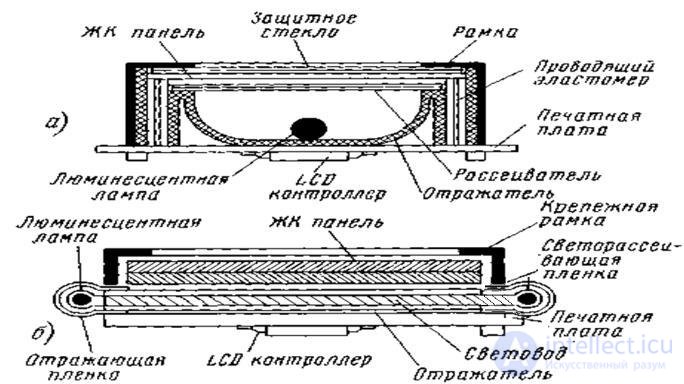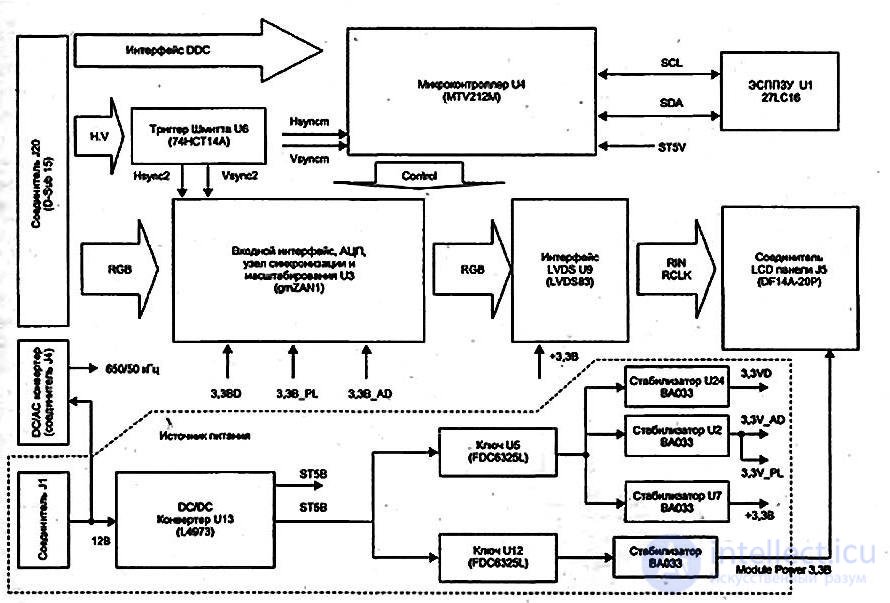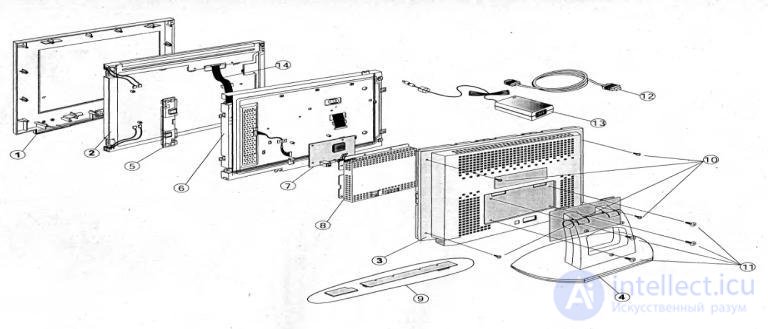Lecture
The main elements of the LCD monitor are:
LCD matrix
The operation of LCD monitors is based on the phenomenon of polarization of the light flux. Polaroid crystals are able to pass only that component of the light, the vector of electromagnetic induction of which lies in a plane parallel to the optical plane of the polaroid. For the rest of the luminous flux the polaroid will be opaque. Thus, the polaroid sort of “sifts” the light, this effect is called the polarization of light.

Figure 66 - Design and operation of the cell (TN) LCD monitor
Liquid crystal matrix device
The liquid crystal matrix consists of several layers - this is,

Figure 67 - Liquid crystal matrix device
At the edges of the reflective layer (usually above and below) there are two gas-discharge lamps like mercury daylight lamps, only with a “cold” cathode (Cold Cathode Lamp) instead of an incandescent spiral, and the glow in them is initiated by high-voltage gas ionization.
Power supply and DC / AC converter to power the backlight
The power supply unit provides the elements of the LCD monitor with a voltage of the desired value. BP is built according to the scheme of frequency conversion BP
A DC / AC converter (inverter), from a DC voltage of 12 V, supplied from the power supply through a connector, produces a 700 V alternating current with a load current of the order of 10 ... 12 mA and a frequency of about 50 kHz to supply two backlights of the LCD panel.
Control and synchronization system
The monitor control system is based on a microcontroller, non-volatile memory and front panel buttons. The microcontroller contains 1024 bytes of RAM and 64 Kbytes of ROM type Flash.

Figure 68 - Schematic diagram of the LCD monitor
The most common causes of faults are:
Typical malfunctions of modern TFT monitors and methods for their diagnostics:
The peculiarity of the repair is determined by the presence in the LCD monitors:
When the monitor is turned on, the network indicator does not light up, the monitor does not work
Voltmeter check the presence of supply voltages. If the voltage is absent or it is significantly less than the norm, check the condition of the PSU. The power supply unit first checks the filter elements and fuse. If they are good, check the key elements of the inverter.
If one of the voltages is missing or its ripple exceeds 10%. check the external elements of the PWM microcircuits and the microcircuits themselves (by replacement).

Figure 69 - The order of disassembling the disassembly of the LCD monitor
One or more vertical lines are missing in the image.
Comments
To leave a comment
Diagnostics, maintenance and repair of electronic and radio equipment
Terms: Diagnostics, maintenance and repair of electronic and radio equipment